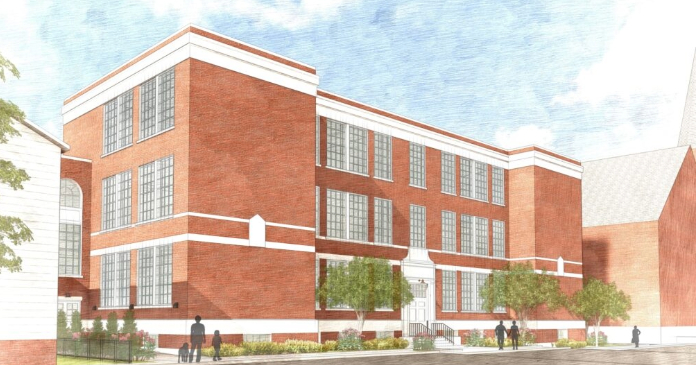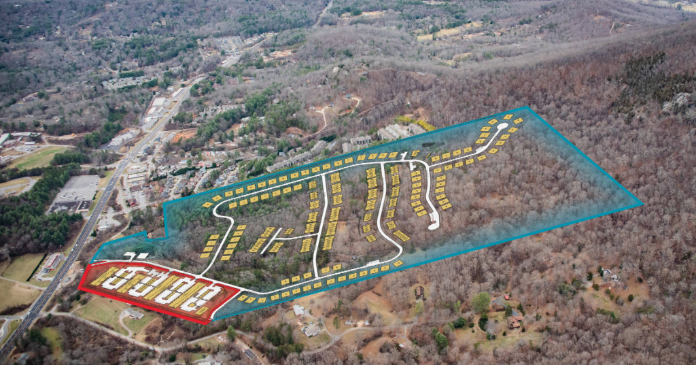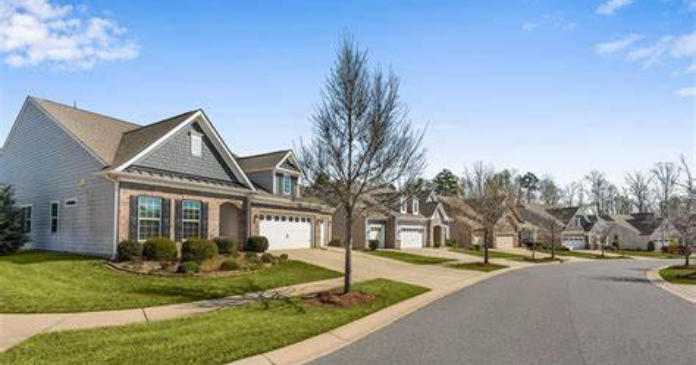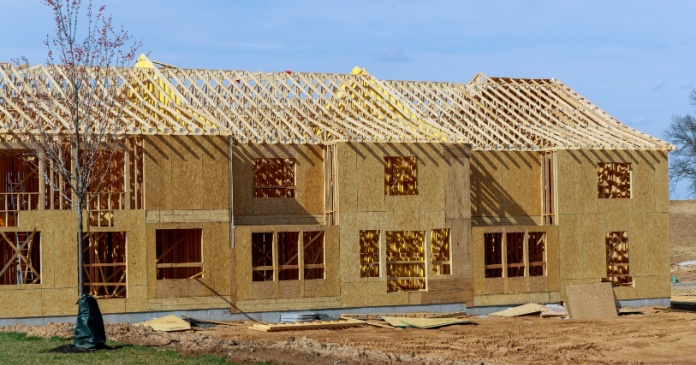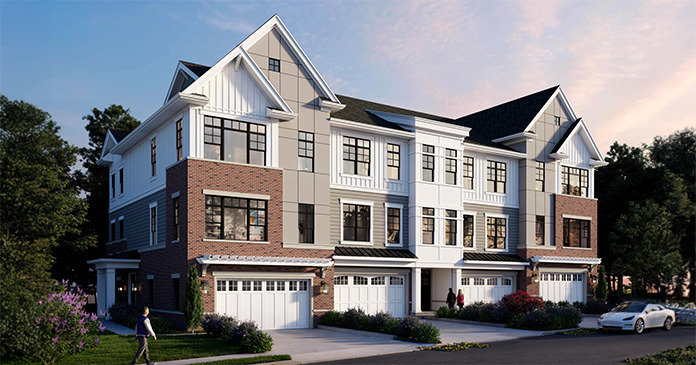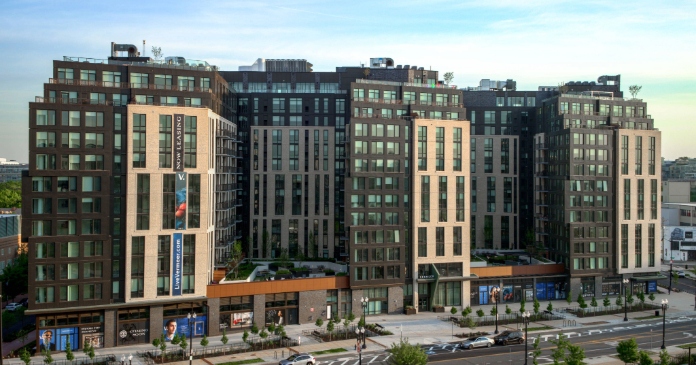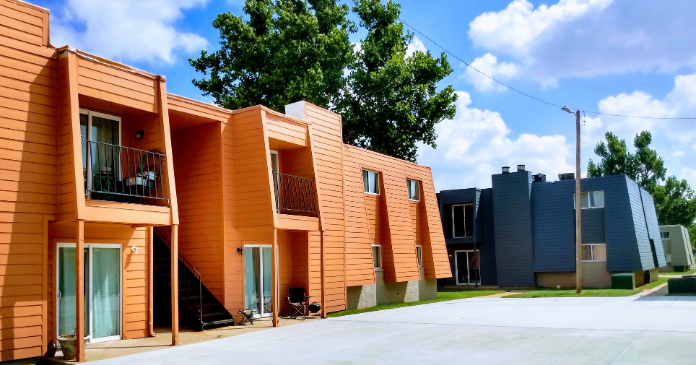
Residents of UDR, Inc.’s Rivergate, 95 Wall and 10 Hanover Square were not among the uninformed.
The 40-year-old apartment REIT, which entered New York City with the purchase of the 493-unit 10 Hanover Square in April 2011, followed by the acquisition of the 706-unit Rivergate in July 2011 and the 508-unit 95 Wall the following September, kept the residents of those high-rises, who were ordered to leave their apartments by Mayor Michael Bloomberg the Sunday before the storm surge inundated lower Manhattan, informed via a link on the front page of UDR’s website to the individual communities’ Facebook pages.
The daily updates about the progress of the recovery from the storm that was only ranked as Category 1, but was the largest Atlantic hurricane on record, with winds spanning 1,100 miles, began just a few days after the deluge hit the Big Apple.
Sandy’s surge inundated lower Manhattan on Monday, Oct. 29, flooding streets, tunnels and subway lines and cutting power in and around the city that was under the evacuation order issued by Mayor Bloomberg on Sunday morning for lowlying coastal areas in Manhattan, Brooklyn, Staten Island, the Bronx and Queens.
The order affected 375,000 New York City residents, including those living in the 1,707 units in the three apartment communities that UDR owns in lower Manhattan that suffered the most in the deluge. The REIT’s two other Manhattan communities, 21 Chelsea and Columbus Square, suffered only minor damage.
The three hardest-hit communities sustained ground-level flooding, power outages, electrical and HVAC/boiler system failures and minor wind damage. Two days after Sandy hit, UDR estimated its liability could total $11 million to $14 million, prior to receiving any insurance proceeds, based on the expectation that the primary building systems at the communities would be minimally affected, and electricity and steam would return in a few days. But, after inspections of those systems by UDR employees and representatives from the company’s insurance providers and initial repairs were completed, the estimate of the damage cost more than doubled.
On Nov. 12, UDR announced total damages were expected to be in the neighborhood of $28 million to $32 million. The company has insurance for flood damage and business interruptions, so its Sandy-related deductible will be around $1.5 million. “While the company believes it is entitled to reimbursement for all of its costs and lost revenue, the timing and ultimate amount of recovery will not be known until a later date,” UDR announced in mid-November.
Consolidated Edison (Con Ed), which supplies electricity to UDR’s New York City apartments, also underestimated how long it would take to restore power to the company’s Manhattan communities.
In UDR’s first recovery update, issued Nov. 2, just three days after Sandy’s waters submerged much of the mechanical equipment in basements and flooded lobbies at Rivergate, 10 Hanover Square and 95 Wall, UDR told those residents, “We contacted Con Edison and they said they planned to have the power restored sometime between Saturday and Wednesday.”
That estimate proved overly optimistic. Unexpected problems with mechanical equipment, damaged when salt water inundated Con Ed’s below-street-level vaults, delayed the power company’s restoration of electricity to UDR’s three storm-battered apartment communities for another two or three weeks.
But, UDR managed to power up lights in stairwells, hallways and lobbies with external generators at all three communities by that Friday and residents were allowed access to the buildings, which remained under the mayor’s evacuation order, between 10 a.m. and 4 p.m., to retrieve medication and other essential items from their apartments. In Friday’s update, the company also asked residents to remove all food from refrigerators and freezers. On Friday afternoon, residents were told, management would begin entering apartments the following morning to clean out any remaining refrigerated or frozen items to prevent rotting foo d from damaging the appliances or attracting pests.
Rivergate Recovery
Hours for resident access were extended to 6 a.m. to 9 p.m. on Saturday, Nov. 3, when Rivergate residents also were informed that contrary to the phone call they might have received from Con Ed telling them that the power had been restored, “unfortunately, that is not the case with Rivergate.” The power company had a problem with the electrical feeder line on First Avenue, preventing restoration of electrical power to the community, where up to four feet of water surged through the lobby, offices and common areas during the storm.
“Since our boilers were under water and we do not know if they will be operational. As a precautionary measure, we ordered a temporary boiler, which is expected to arrive by Monday,” the Saturday update said.
Con Ed drained its vaults beside the building on Sunday, Nov. 4, when the utility company workers also were replacing feeders to the transformers on the 34th Street side of the building. “On the 35th Street side, things seem more complicated, as it appears that a transformer has malfunctioned and will need to be replaced entirely,” Monday’s update told residents.
“In addition, hydraulic oil was found in Con Ed’s vault below the sidewalk. The utility had to bring in a hazmat crew last night to clear the vault before its workers could continue with replacement of the transformer,” the update said.
On Monday, the Rivergate residents got some good news in their daily update. Power was restored to the community’s south tower and installation of a temporary boiler to provide heat and hot water was underway. Electricity was restored to the north tower on Wednesday and residents of all three communities were informed that UDR would pro-rate rents to reflect the period of time during which they were prohibited from returning to their apartments.
On Wednesday, Nov. 7, when electricity was restored at Rivergate’s north tower, residents of all three communities learned that UDR was offering them a $100 rental credit to help restock their refrigerators. “Please consider this a good-will gesture in anticipation of your eventual return to the community,” the Rivergate update said. But, the NYC Department of Buildings (DOB) didn’t consider restoration of power, alone, sufficient to allow unrestricted access to buildings, UDR reported in the update that also announced that apartments should have cold water running by the end of the day and the temporary boiler would be in place and providing heat and hot water by early the following week.
On Thursday, Nov 8, UDR obtained approval from the DOB to allow residents to move back into their apartments, even though the community still was without heat and hot water. Rivergate’s three original boilers, which were flooded with 12 feet of salt water, would require a complete rebuild. A newly-purchased temporary boiler was installed on Saturday, Nov. 10, the company told residents in the weekend update, but its installation required re-piping of steam, gas and water throughout the building to the external equipment, which would take several days.
The new boiler wouldn’t provide a normal level of heat and hot water, but a separate team of contractors was working on the rebuild of the permanent boilers, the Saturday update reported.
Heat was restored to the building on Monday, Nov. 12, and plumbers were focused on restoring hot water and, on Saturday, Nov. 17, Rivergate residents had heat, hot water and electricity for the first time since the storm.
In the final Rivergate resident update on Monday, Nov. 19, residents learned that the community’s house boiler was operating at full capacity.
10 Hanover Square
Residents at 10 Hanover Square finally were able to return to their homes on Saturday, Nov. 10, thanks to Con Ed’s restoration of steam to the building, providing heat and hot water to the apartments. And UDR told residents in Saturday’s update that the rent rebate period had been extended to that date because of the lack of those essential services.
Although the community’s equipment was ready to accept power from the utility company by Monday, Nov. 5, when Con Ed came to the site that day, the company discovered that the vault feeding electricity to the building which was completely submerged by Sandy’s flood waters was still wet and needed to be de-watered and dried before damaged circuits could be repaired and service returned to the building.
The next day the resident update reported that Con Ed had announced it would reimburse its customers for food and medicine spoilage, but still had not been able to de-water and dry the vault. Although UDR offered to assist in that effort, the utility had not responded to the request to enter the vault for repair, and, because it was locked, the community’s workers couldn’t access it without Con Ed’s permission.
Wednesday’s update included the good news that Con Ed had accepted the community’s offer and, with assistance from 10 Hanover engineers made progress, with the hope that power would be restored within 24 hours. Late on Tuesday, the vault was opened to the community’s workers, who removed the water and dried the vault area. But, Thursday’s update didn’t provide much good news.
The utility’s workers were on site Wednesday, Nov. 7, the update reported, and results were mixed. “We are still not sure when power will be restored at the community. This is very frustrating to all of us, since the restoration of power is the first step towards achieving our over-riding goal: to enable you to return to your home as quickly as possible.”
Then, on Friday, Nov. 9, finally there was some good news. Power was restored to the building by Con Ed late in the afternoon, allowing community workers to test 10 Hanover Square’s equipment. “Assuming all goes well, we will then have a firm schedule for re-occupancy,” the update said.
With two elevators operating in each bank of the community by Saturday, “we are hopeful the DOB will permit unrestricted access within a 24- to 48-hour timeframe,” said Friday’s update. “We understand that Con Ed now estimates that steam service will be restored to our building by Sunday.”
With power restored, apartments on the 10th floor and higher had heat and hot water, but, because the apartments on the 9th floor and lower are dependent on steam service for heat and hot water, residents on the lower floors would have to wait until Sunday, when ConEd expected to restore that service to the building.
Saturday, Nov. 10, brought the news everyone had been waiting for. “10 Hanover Square is now ready to welcome you home!” that day’s update reported. And, on Saturday night, Con Ed restored steam to the building, so all of the apartments had heat and hot water.
Workers had labored 24/7 for almost two weeks to reach that point, and, although the building still was not 100 percent in terms of services, that goal was in sight.
95 Wall
Residents of 95 Wall were the last to return home after the storm. Problems with the community’s emergency system’s fire panels and pumps were the cause of much of the delay.
95 Wall’s recovery from the storm progressed much like that at UDR’s other two storm-drenched properties, with all of the water pumped out of the basement and garage by Friday, Nov. 2, residents were informed in the first of the daily updates that would continue until the day before Thanksgiving.
On Monday, Nov. 5, 95 Wall residents learned that, although the building’s engineers initially believed the electrical switchgear, transformers and other equipment damaged by saltwater flooding during the storm would have to be replaced, that might not be the case. After closer inspection, the engineers were cautiously optimistic they might be able to salvage much of the damaged equipment. Complete replacement of that equipment would be a time-consuming process because the parts would have to be located, ordered and then installed.
On Friday, Nov. 9, with no firm date from Con Ed for the utility company’s restoration of power to the community, residents got some bad news in their daily update.
“Today, we tested the electrical switchgear that powers our building and, unfortunately, it failed. Con Ed was also on site to inspect their gear and we were informed that they will need to change out major components in their vault,” the update reported. Two external generators would be connected to a temporary switchgear assembly to be built in the community’s garage. Contractors were working 24/7 to build that switchgear, which should be operational by the middle of the next week, with residents returning to their apartments by the following Friday, the update said.
Subsequent daily updates chronicled that week’s progress, including replacement of the fire panels over the weekend and restoration of heat and hot water to the building and, with the building’s temporary switchgear in place, the large generators finally were operating.
Although Con Ed still was working on replacement of major parts in its vaults that supply 95 Wall with power, the Thursday, Nov. 15, update informed residents that the delay would have no impact on the return of electricity to the building because the temporary generators had been installed and were operational.
Friday’s update brought the best news of all. “We are very happy to report that residents may return to the community tomorrow, November 17th!”
The community’s engineers and electricians had worked around the clock, and with some creativity, to restore electricity using the community’s own generators, allowing restoration of power without waiting for Con Ed. The power company’s vault repairs finally were complete on Tuesday, Nov. 20, and residents were informed in the day’s update that transfer from the temporary generators to the conventional feed would take place overnight, with a brief interruption of power in the middle of the night.
Because clocks powered by electricity would be disrupted during the temporary outage, Tuesday’s update reminded residents to power up their cell phone alarms or have battery-operated clocks. “We don’t want anyone late for work!” the cheery update said.
The day before Thanksgiving, residents learned that the overnight operation to connect to Con Ed’s electrical feeds to the community was successful and residents no longer needed to be concerned about overloading a temporary system, the update said, wishing residents and their families a happy holiday.
The day after 95 Wall’s residents learned they could go home, one of them posted a message on the community’s Facebook page thanking everyone involved in the recovery effort. “It’s been rough, I know, but I think you did a great job, given the awful circumstances,” she wrote, adding that she appreciated the email updates.
Another resident wrote, “I just wanted to say thank you for trying so hard in such an awful situation with the effects of the hurricane. I, for one, really do appreciate your efforts. Thank you for the updates, a special thank you for pro-rating our rent and thank you for helping re-stock our refrigerators.”





